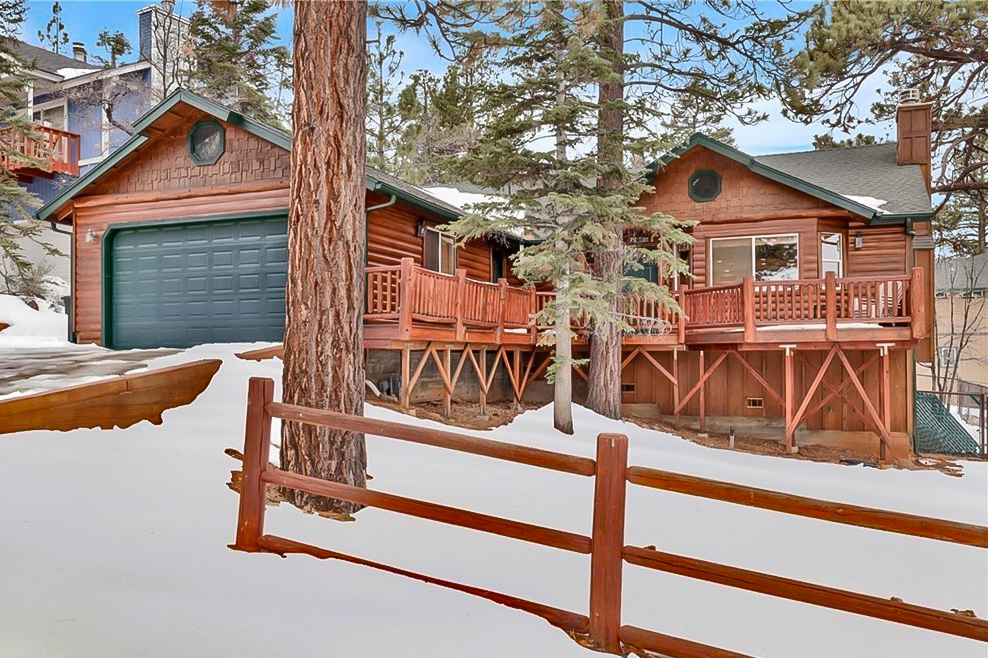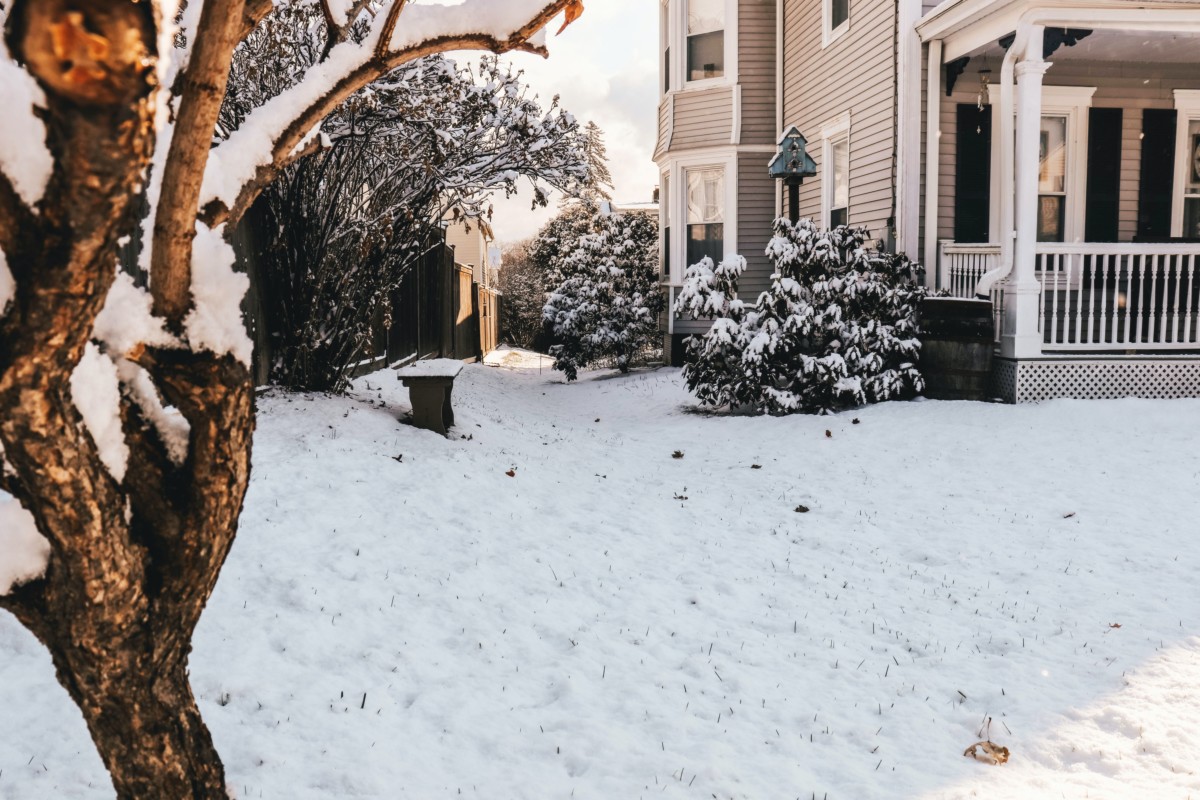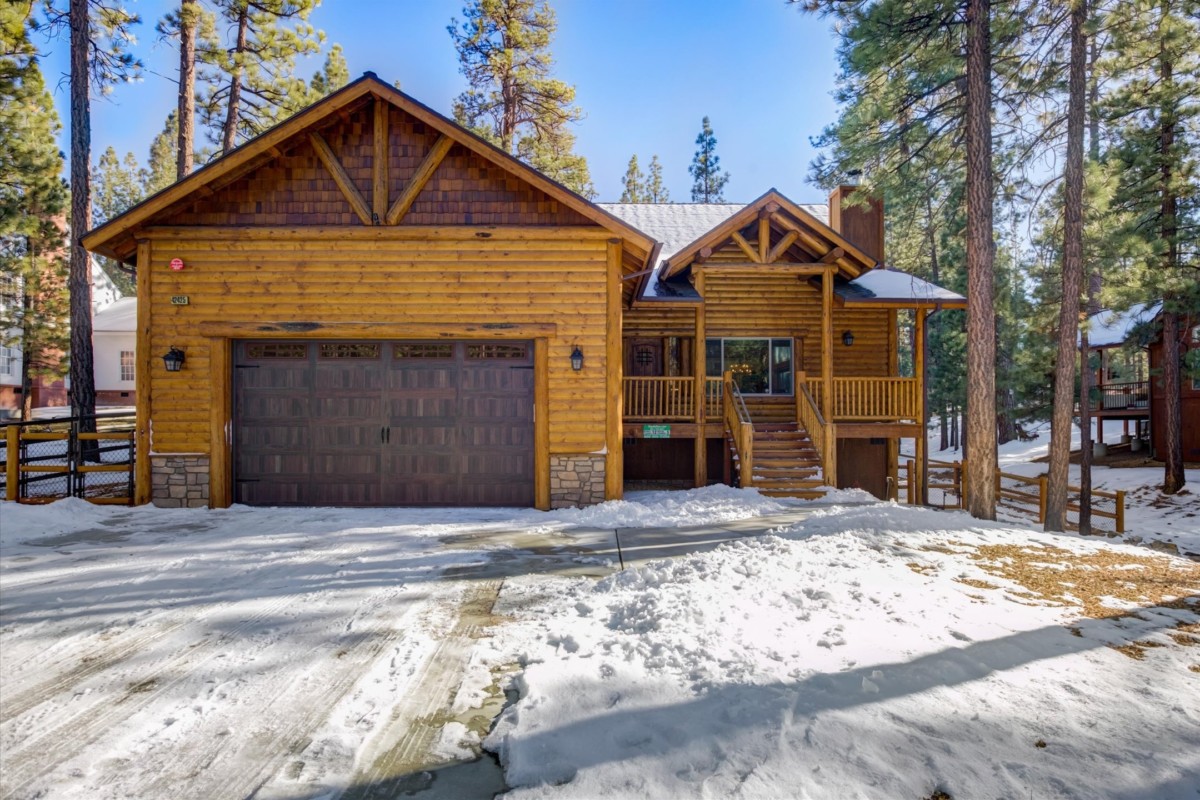Winter is approaching, and that means cold days, dark evenings, snow flurries, and staying cozy in your home. But the winter months can wreak havoc on your house. Gusting winds can batter your beautiful plants. A snow or winter ice storm can put stress on your roof. And just a few days of freezing rain can cause serious issues for clogged gutters and downspouts.
But you can take a few precautions when winterizing your home this autumn – before the first sign of winter arrives. Here’s how you can prepare your home for winter in just 10 steps.

1. Inspect your roof
Your home’s roof can be particularly vulnerable to winter weather, especially if your home is older. For example, high winds, heavy rain, or snowfall can cause strain, and excess leaves or debris could clog gutters and create build-up on the roof. A damaged roof can impact your home’s value, and it’s easier and cheaper to take precautionary steps now before any trouble strikes in the colder months.
Schedule a roof inspection before the winter weather hits so a professional can thoroughly inspect your roof’s condition and make recommendations. Ask the inspector to check for missing or loose shingles, blocked gutters, or potential sources of mold and decay.
Renovating your home?
Find out what your home's worth, edit facts, and see the impact of home projects.
2. Clear the gutters
Renovating your home?
Find out what your home's worth, edit facts, and see the impact of home projects.
Falling leaves are a hallmark of the autumn months, but they can be trouble for a home’s gutters. As leaves, dead branches, and other debris accumulate in the gutters, the rain has nowhere to go. Clogged gutters can cause damage to a home’s walls, soffits, and fascias, as well as siding and basements.
There are two ways to mitigate this problem – grab a ladder and clear the debris yourself or hire local professionals to safely take care of the job. Cleaning your gutters now can help you prepare for extreme winter weather. You can also consider installing gutter guards that cover your gutters and help collect debris, making cleanup that much easier.
Pro tip: Home maintenance company Nor-Cal Maintenance Inc. says, “Maintaining what you have is critical, especially with the high cost of everything. We recommend cleaning your rain gutters before and after it rains to prevent corrosion.”
In addition, having your gutters clear and your roof inspected can help prevent ice dams. Ice dams are caused when heat escapes through your roof and melts the snow. The melting snow then refreezes as ice in your roof or gutter. An ice dam can potentially damage your roof shingles or cause leaks on the attic floor or upper levels in your home.

3. Clean the chimney
While having your roof inspected, you should also have your chimney checked. This should be done at least once a year, particularly if you plan to use the fireplace as part of your heating system. A blocked or damaged chimney may heat your home unevenly and increase your utility bills. However, its biggest risk is a potential fire hazard.
If you’re looking to keep to a tight budget or enjoy home improvement tasks, you can clean the chimney yourself. However, it’s easier and safer to hire a chimney sweep or cleaning company to inspect and clear your chimney and fireplace. They’ll identify and clean out any creosote buildup, which can cause fires if not cleaned often.
If you don’t use your chimney to keep your home warm or you live in a no-burn area, you may want to consider using a chimney balloon. A chimney balloon plugs your chimney, helping to prevent hot air from escaping when not in use.
4) Prepare the pipes
If you live in an area like Minneapolis, MN, or Boston, MA, that gets very cold in the winter, you’ll have to take extra measures to winterize your home. Before the frost hits, make sure to drain and store garden hoses. Make sure to leave the outside drain valve open so any remaining water can drain properly. However, you’ll want to close any inside valves that supply water to outdoor faucets to prevent freezing pipes. Frozen pipes can burst from the pressure causing your home to flood.
Don’t use antifreeze in any of these lines – it’s not good for the environment and could be harmful to pets, wildlife, and people. You should also look for water pipes located on your property that may be in unheated areas like the attic floor, garage, or crawl spaces.
Make sure to insulate these indoor pipes to prevent them from freezing. The Red Cross recommends keeping the thermostat at the same temperature throughout the day and night, so the pipes aren’t subject to drastic temperature changes. Continue to check all the faucets regularly throughout the winter season.

5) Check for air leaks
Leaks in your windows, doorways, or walls can drastically increase your energy bills. And if you live in a cold climate, it can make the indoors even colder. Luckily, it’s easy to perform checks throughout your home and seal any leaks to prevent any warm air from escaping.
Check all the window frames and doors in your home for cracks where cold air could come through. You should be able to feel cold drafts in these areas, which can help you determine what needs to be sealed. Places like vents, phone lines, or any potential opening from your home to the outside can also be a source of heat loss.
The Department of Energy recommends performing a visual inspection as well as a simple pressurization test to discover where external air is entering your home. If you find a leak, use caulk and weather stripping to seal and prevent cold air from entering.
You can also consider adding window insulation film if your home’s windows are single-pane or are particularly drafty. If you live in an area where winter storms are common, consider installing storm windows or a storm door to better winterize your home and make it more energy efficient.
6) Adjust the thermostat
During the winter months, naturally, you want to keep warm air inside your home to prevent it from being too cold. However, the higher your indoor temperature is, the higher your utility costs will be. So it’s a good idea to keep your thermostat at least 65 degrees. Anything lower than 50 degrees may cause frozen pipes.
You can use a programmable thermostat and preset your home’s temperature or have the heating kick on if your home falls below a certain temperature. If you have an unfinished basement that you don’t use or are winterizing your vacation home that’s vacant during the winter, you can have a low-temperature sensor installed. This system will alert you if a certain room’s temperature drops below a certain threshold, giving you time to turn on the heating system or fix the issue.
While adjusting your thermostat, it’s important to check your home’s smoke and carbon monoxide detectors and replace batteries. Especially if you frequently use a gas fireplace or heater to heat your home, you’ll want to ensure these detectors are working properly.

7) Have your heating system checked
Before winter hits, having your heating system checked is a good idea, especially before your local HVAC company is booked for the season. They’ll check your heating and ventilation system is checked and cleaned which can help keep your indoors warm and prevent frozen or burst pipes.
Another way to winterize your home is to have your water heater checked to ensure it’s working properly before any cold snaps hit. Your water heater is part of your plumbing system and helps heat the water throughout your home. If not properly maintained, the water inside the tank and pipes can freeze. Consider having your local plumber check the water heater before winter begins.
8) Insulate the attic
If you have an attic, making sure it’s properly insulated can help keep your house warm while helping to prevent ice dams. Make sure to check any attic vents for leaks and examine the insulation. You can also have a professional examine the insulation to get a better idea of the shape it’s in. It’s best to do this ahead of the first cold snap so that you have enough time to repair any potential issues.

9) Clear walkways, paths, and driveways
Increased rain, snow, and ice can be particularly dangerous for walkways and driveways. It’s important to keep these areas clear and inspect any steps or railings for damage when winterizing your home. You may want to keep a deicing solution like salt, sand, or pellets on hand to clear these areas throughout the season.
Looking to save money on your mortgage?
Reduce your monthly payments by refinancing now.
10) Clean up the yard
While many flowers need the chill of a winter season in order to bloom in the spring, it’s important to prepare the entire yard for cold weather. Changing seasons will impact your garden no matter if you’re dealing with dry, cold weather or snow and freezing temperatures.
Consider bringing more fragile plants indoors if you live in a colder climate, and remove any annuals you have planted. Put away any outdoor furniture you have, and clear out any fallen leaves so they don’t suffocate the lawn. Finally, store all your gardening tools for the season so they don’t rust or wear down before the spring. You may also want to pull out winter essentials like a snow blower to a more accessible place.
Winterizing your home may seem like a task, from having your HVAC system checked to sealing your windows and doors to prevent heat loss. But the sooner you accomplish these tasks, the better prepared for the winter months you’ll be. And then you can stay warm all season long.



















 English (US) ·
English (US) ·